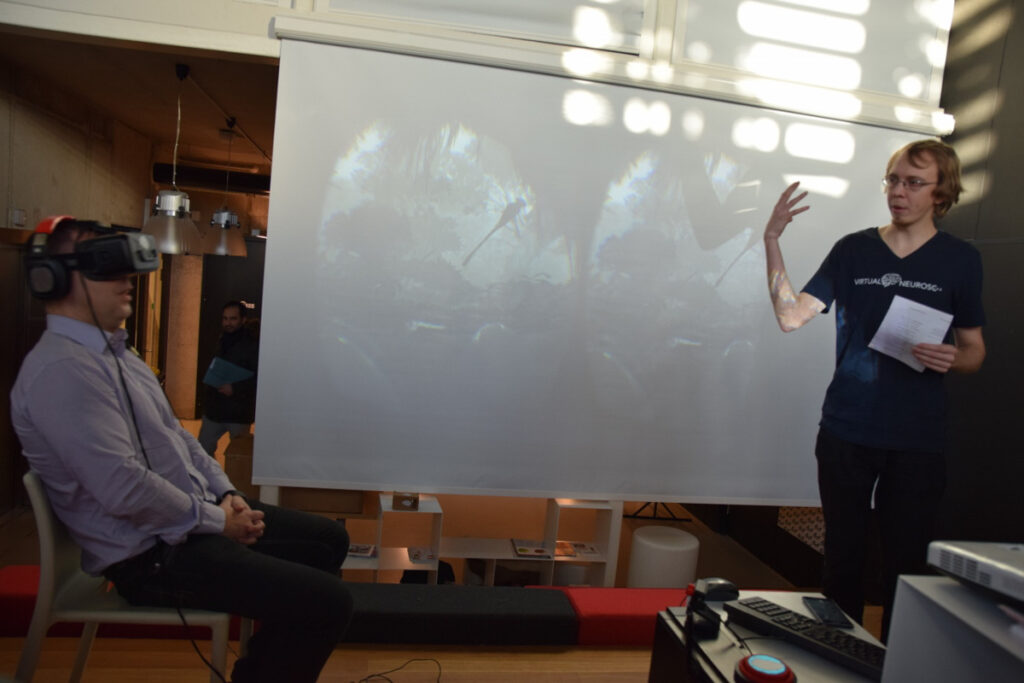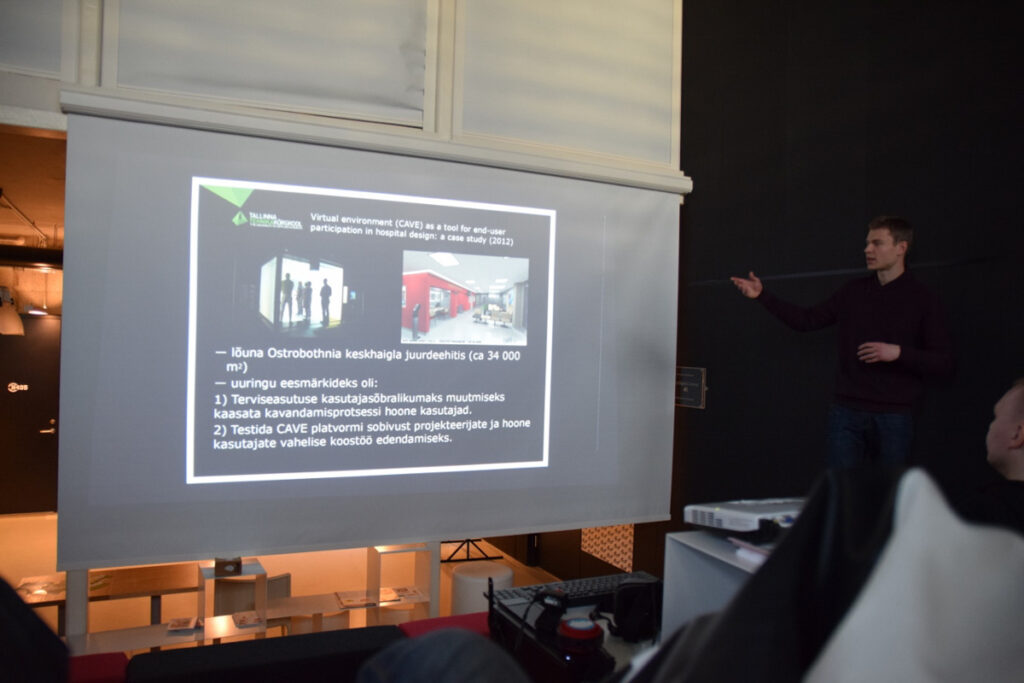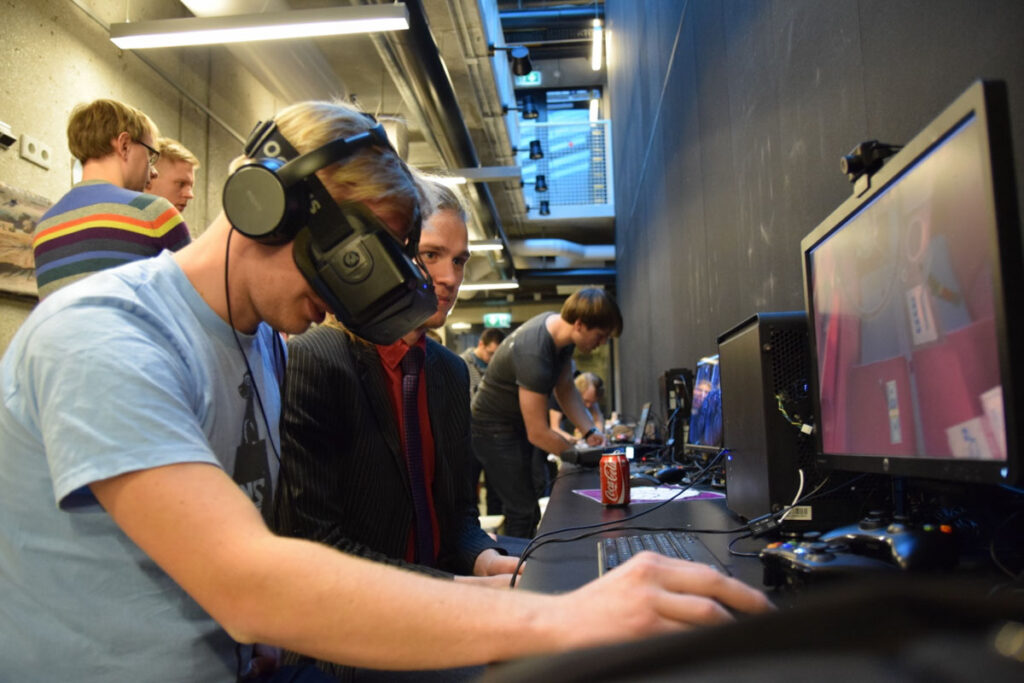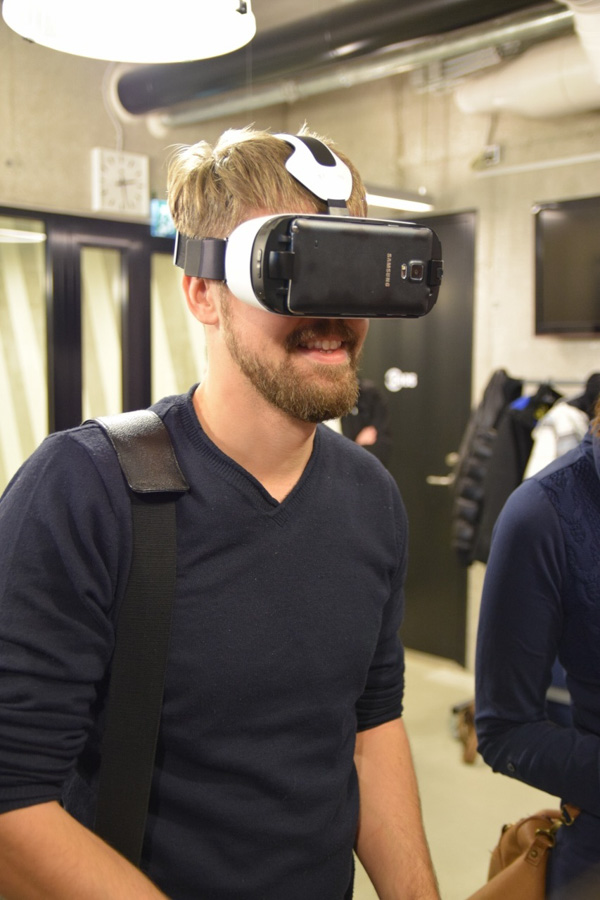It was yet another warm winter day on december 19th, when dozens of estonian VR developers and enthusiasts came together to talk about the many burning questions. What do people mean by “virtual reality”? Is there still a place for a CAVE VR system in todays world dominated by head-mounted displays? And what do we need to foster VR development in Estonia? Luckily we got answers to many of those questions thanks to our awesome speakers and demo stations.
First up was Egert Ronald Parts from TTK University of Applied Sciences, introducing the new CAVE VR system they have on the premises in Tallinn. First he gave an overall introduction of the CAVE approach – that is immersing the viewer by projecting stereoscopic images around different flat surfaces in the room via projectors. In TTK’s case there are a total of five screens – three walls, the ceiling and the floor.
The setup is used to validate new engineering and architectural approaches in virtual space. Egert argued that the ability to share the virtual space with other spectators also wearing stereoscopic glasses is a major advantage over head-mounted displays. There was a brief debate about social VR and it’s ability to replace every possible CAVE solution soon. But as for now, CAVEs definitely win in terms of the users own full-body presence. Those who have a stronger urge to try one of these systems out should contact Egert via egert@tktk.ee.
The second speaker was once again Madis Vasser, this time sharing his tips and tricks on the topic of how to talk about VR to the general public through VR demos. As many know, talking about VR without showing it can be a lost cause, as people really do not grasp the idea behind say presence without having the experience themself. His recipe for a good 30-minute introduction included the following: VR Lab rats (to demonstrate the fundamental difference between playing the same game on the screen versus in VR), Deep Space VR (to show that the content has not size limitations), Back to Dinosaur Island (no time restrictions either, so yay for timetravel), Senza Peso (to highlight the abstract side of VR), Henry trailer (to show the power of interactivity) and Blocked In (to emphasize that VR can also be a standing experience and that the future of computer interaction will be so much more natural than today). He finished with a call to action to create more VR-compatible content, as the tools for this are freely available and require zero-to-minimal programming skills.
Lastly we had our host, Martin Aadamsoo from the digital crative media incubator Digix. Together with the audience we discussed the needs and opportunities of the estonian VR community and how to foster growth and progress in this sector. We got many answers to the question “what do developers need?”. First and foremost was hardware – different headsets and peripherals, as no single developer has the means to gather all of the new shiny toys (soon to be) out there. Yet, developing something for said hardware might be worthwhile, so a place to try these gadgets out before commiting oneself is badly needed. It was decided that a more formal questionnaire will be devised and sent to the dev community to work out the exact needs. But if this VR incubator dream comes true, the waiting line behind the door will probably be quite long!
In the demo area we had some interesting exhibits, as usual. People got to out try the legendary AntVR (sadly not having its best day), the GearVR innovator edition, some simpler mobile headsets/spectacles and also the mandatory Oculus. Content wise there were the usual Elite:Dangerous and I Expect You To Die (thanks Mario!), other demos from the web (thanks PsychoBus!) and also many homegrown experiments. One was an impressive mobile turret shooter by Maksim Vladimirovich called “Battle 360“, the other a quick Gear VR test scene by Karel Airapetjan.
Madis also showed his work with porting different Unreal demos to VR, namely Landscape Mountains hang-glider and the Matinee fight scene. He also organized a quick mini-game with his “spinning tunnel” demo (to be released) where people had to try as hard as they can to stand on one foot for as long as possible. Much harder than it sounds when your eyes tell you that the room is tilting! Much general netwoking and buzz also took place and many decided that perhaps our next local meetup before the actual phycial one in february will be held in VR! Many thanks to Digix for the awesome place and snacks, and to everyone coming out!
More pictures here.



